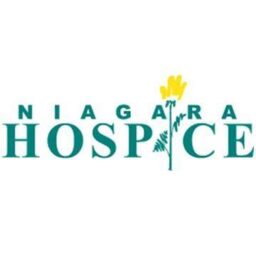When families receive hospice services for a loved one with a terminal illness, the main objectives for hospice staff are to provide care and support for everyone involved with the patient through challenging times. The top priority for doctors, nurses, counselors and aides is to improve the quality of life for patients and their caregivers and reduce the burden of end-of-life circumstances by educating them so they can have more precious time together.
Hospice services can vary, but some of the most impactful and helpful services are the unique supplemental therapy options available to patients, including massage, music and pet therapy.
Massage Therapy:
Massage therapy is the practice of kneading or “massaging” a person’s muscles to improve one’s well-being or health. Massage therapy is a form of manual therapy, as it “includes holding, moving, and applying pressure to the muscles, tendons, ligaments and fascia.” (Better Health – Massage Therapy)
This type of therapy can be good for anyone, but it provides some great benefits for those who are in hospice care. It has been found that massage therapy can help improve circulation, as loosening muscles and tendons allow for increased circulation.
Improved circulation can be very valuable as it has a direct impact on pain management and can help alleviate fatigue. This therapy has also been found to decrease pain and joint stiffness, which can help some people improve mobility. (Keystone Hospice – Massage Therapy)
Research shows this form of therapy can reduce anxiety, depression, mood disorders, stress, nausea, fatigue, and sleep difficulties as well as provide relaxation and comfort. (Pathways Health – Massage Therapy)
Music Therapy:
Music therapy is “the clinical & evidence-based use of music interventions to accomplish individualized goals within a therapeutic relationship by a credentialed professional.” (musictherapy.org/about)
Music therapists develop a particular and unique plan to help their patients find relaxation and comfort. When music therapists work with hospice and palliative care patients, they utilize many techniques for treatment, such as singing, songwriting, guided imagery and music, lyric analysis, legacy and life review projects, and musical instruments. (EverHeart Hospice – Music Therapy)
Just like massage therapy, music therapy provides physical benefits. For hospice patients dealing with physical pain, music therapy provides improved relaxation, enhanced communication and speech abilities, and improved motor coordination. It also helps patients by bringing about heightened self-confidence, increased social interaction, along with introspection and life review. (Crossroads Hospice – Music Therapy)
Pet Therapy:
Pet therapy is a guided interaction between a person and a trained animal. Patients can interact with a pet therapy animal as they would with almost any pet. This may include tossing a toy for the animal to fetch or talking to, petting, hugging or cuddling, or just silently enjoying the animal’s presence.
Whether a therapy animal visit aids in reminiscing, easing loneliness or calming anxiety, the benefits of visits with hospice patients and their families are numerous. Pet visits can not only influence health, but visits also can contribute to happiness.
It has been found that meeting with a hospice pet therapy dog can provide mental health benefits. The pet therapy sessions can help to bring joy and even reduce feelings of anxiety and depression, along with isolation and alienation. Pet therapy can help hospice patients take their minds off their aches and pains as well as encourage communication. (Benefit of Hospice Therapy Dogs)
There are also some physical benefits to pet therapy that could be very valuable to hospice patients. It’s been found that “interaction with a gentle, friendly pet” can release endorphins (oxytocin), improve cardiovascular health, lower blood pressure, and even produce an automatic relaxation response during the act of petting. This automatic relaxation response can help to reduce the amount of medication some patients need.
Dogs are the most common animal used in pet therapy programs, but due to allergies and other restrictions that people may have, a variety of other animals can be used, such as pigs, rabbits, cats, horses and birds. (The Unique Connection of Pet Therapy with Hospice Patients)
Since the primary focus of end-of-life care is to help ensure that an individual’s remaining time is spent as peaceful as possible, these different types of complementary therapies help instill a sense of comfort and relaxation, which are very important in easing the difficulties of the last stage of life.
When patients seek relief from specialized therapy options, they find renewed focus on living in the present with their loved ones while experiencing lower levels of anxiety, depression, isolation and other issues related to their condition.
For more information about the supplemental therapies that Niagara Hospice provides, please click here.

